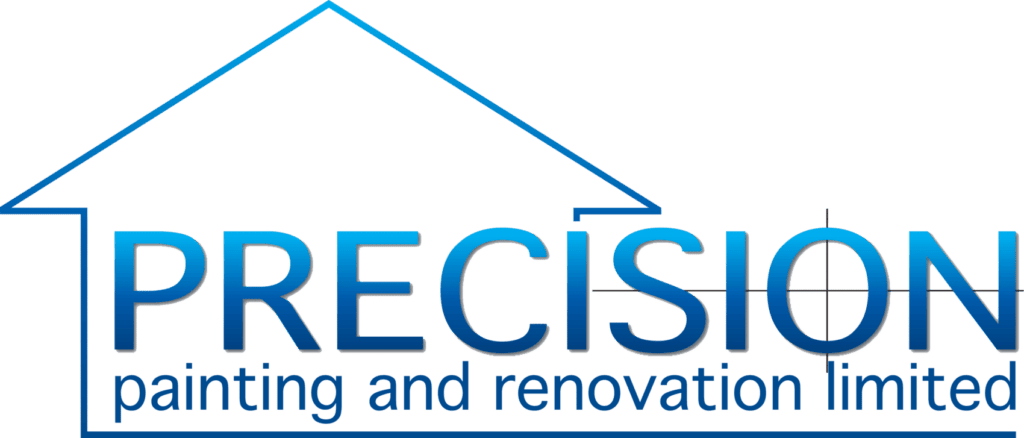A well-maintained home reflects care, comfort, and attention to detail. While most homeowners focus on visible upgrades or décor, one crucial aspect often overlooked is the importance of repainting as part of regular maintenance. A Professional House Painting Service not only rejuvenates your home’s appearance but also protects its surfaces, ensuring long-term structural integrity. Beyond color and aesthetics, repainting is an essential preservation practice that keeps walls healthy, surfaces durable, and environments safe.
The Real Purpose of Regular Repainting
Repainting is not just about changing colors; it’s a preventive measure that maintains the condition of your property. Paint acts as a protective barrier against external and internal elements—moisture, sunlight, dust, and daily wear. Over time, even the best paints fade or deteriorate under exposure. Regular repainting renews this protective layer, ensuring that both exterior and interior surfaces remain intact.
A neglected paint surface can lead to deeper issues, such as:
-
Peeling and cracking that expose materials underneath
-
Moisture absorption causes rot or mold growth
-
Structural weakness in wood and drywall
-
Increased costs in future repair work
When repainting is viewed as maintenance rather than decoration, it shifts from an occasional project to a scheduled necessity.
Preserving the Home’s Structure
Paint plays a silent yet critical role in safeguarding your property’s framework. The outer walls of a house are exposed to extreme conditions—rain, humidity, snow, and UV rays. Quality paint seals porous materials like concrete and wood, preventing water infiltration. This layer prevents warping, mildew formation, and material decay.
Interiors benefit just as much. Kitchen and bathroom walls face high humidity; living areas gather dust and oils. A timely repaint ensures that the walls are sealed, smooth, and resistant to damage. This protection significantly extends the lifespan of materials, delaying expensive repairs or replacements.
The Financial Advantage of Maintenance Painting
Regular repainting is one of the most cost-effective ways to maintain property value. Homes that show signs of peeling or faded paint lose appeal and market worth. A fresh coat, on the other hand, enhances both perceived and actual value.
Let’s break down the financial benefits:
| Aspect | Without Regular Repainting | With Regular Repainting |
|---|---|---|
| Surface Health | Deterioration, cracks, rot | Protected and durable |
| Maintenance Cost | Higher due to accumulated damage | Lower, as issues are prevented early |
| Property Value | Decreases over time | Increases or sustains market value |
| Aesthetic Appeal | Dull, aged appearance | Fresh, inviting look |
Regular repainting acts as a financial safeguard, ensuring that your investment remains protected from slow but costly deterioration.
The Psychological and Aesthetic Value
Color influences mood and perception. A well-painted environment evokes comfort, productivity, and pride of ownership. Over time, even subtle discoloration can alter how a space feels—turning a once vibrant room into a dull or uninspiring area.
Repainting restores not just the walls, but the emotional connection occupants have with their home. The transformation of a faded space into one that feels alive can boost morale and encourage care for other aspects of the property. Colors, when chosen with intention, can even affect energy levels—soft neutrals for calmness, bright tones for energy, and deep shades for sophistication.
When a home looks and feels cared for, it nurtures a sense of well-being that extends beyond aesthetics.
Signs It’s Time to Repaint
Identifying the right moment for maintenance painting prevents deeper issues. The following are common indicators that a repaint is due:
-
Fading or Discoloration: Exposure to sunlight and pollutants dulls the finish over time.
-
Peeling or Bubbling: Indicates moisture trapped beneath the surface or poor adhesion.
-
Cracks and Chipping: Exposes underlying materials to environmental elements.
-
Mold or Mildew: Signals excess moisture and a compromised paint layer.
-
Rough or Chalky Texture: A Sign of aged paint losing its binding properties.
-
Visible Stains: Especially common in kitchens, bathrooms, and high-traffic zones.
Regular inspection—once every few years—can prevent these issues from worsening and maintain your home’s pristine look.
How Often Should You Repaint?
The repainting frequency depends on several factors—location, climate, surface type, and paint quality. Below is a general guideline:
| Area | Recommended Repainting Interval |
|---|---|
| Exterior Wood Surfaces | Every 3–7 years |
| Stucco or Brick Exteriors | Every 5–10 years |
| Interior Living Areas | Every 5–7 years |
| Kitchens and Bathrooms | Every 3–4 years |
| Ceilings | Every 7–10 years |
| Trim and Moldings | Every 2–4 years |
These intervals can vary, but establishing a repainting schedule ensures surfaces are always protected before deterioration sets in.
Choosing the Right Paint for Maintenance
Selecting the right paint type is crucial for long-term performance. A maintenance-focused approach considers durability, finish, and environmental resistance.
Key factors to consider:
-
Durability: Choose paints with high scrub and stain resistance for interiors.
-
Finish: Satin or semi-gloss finishes are easier to clean and more resistant to moisture.
-
UV Resistance: For exteriors, UV-resistant paints retain color longer and prevent fading.
-
Low VOC Options: Safer for the environment and indoor air quality.
-
Primer Compatibility: A strong primer base enhances adhesion and extends paint life.
A well-matched paint product ensures not only beauty but also endurance under daily stress.
Preventing Damage Through Repainting
Regular repainting prevents damage in multiple ways—often invisible until it’s too late. Here’s how it contributes to long-term preservation:
-
Moisture Control: Sealed surfaces stop water penetration and mold formation.
-
UV Protection: Blocks harmful rays that degrade wood and siding.
-
Pest Deterrence: Painted surfaces reduce cracks where insects and termites thrive.
-
Surface Renewal: Fills small imperfections, reducing the risk of deeper cracks.
-
Corrosion Resistance: For metal railings, fences, or fixtures, paint acts as a rust barrier.
This protective shield ensures that your home stays resilient through environmental challenges.
The Environmental Impact of Maintenance Painting
Neglecting repainting may seem harmless, but it often leads to more waste and environmental strain. When walls deteriorate, they require more intensive restoration work—using extra materials, primers, and coatings. Routine repainting minimizes such waste.
Moreover, modern paint formulations include eco-friendly options with reduced volatile organic compounds (VOCs). These paints contribute to better indoor air quality and minimize environmental footprint. Regular repainting using sustainable materials ensures both your home and the planet benefit from responsible upkeep.
The Professional Approach to Maintenance Painting
While some homeowners prefer DIY painting, maintenance painting requires precision, surface preparation, and material knowledge. Professionals assess surface conditions, repair imperfections, and apply coatings uniformly. Proper priming, sanding, and sealing are essential to achieving results that last beyond the typical lifespan of paint.
The professional approach involves:
-
Inspection and Assessment: Checking for damage, moisture issues, or cracks.
-
Surface Preparation: Cleaning, sanding, repairing, and priming.
-
Paint Application: Using techniques suited for different materials.
-
Detail Finishing: Ensuring trims, corners, and edges have clean lines.
-
Final Review: Evaluating finish consistency and coverage.
By following these steps, maintenance painting turns into an art of precision and protection.
Long-Term Benefits of Scheduled Repainting
Repainting as part of maintenance brings lasting rewards that extend well beyond aesthetics:
-
Enhanced Durability: Surfaces remain strong and weather-resistant.
-
Improved Energy Efficiency: Reflective paints reduce heat absorption in exteriors.
-
Healthier Interiors: Fresh coatings reduce dust, allergens, and mold.
-
Higher Resale Value: A well-maintained home attracts potential buyers faster.
-
Reduced Stress: Fewer emergency repairs and surface issues.
These benefits collectively contribute to a smoother, more cost-effective approach to property care.
Repainting as Preventive Care, Not Just Aesthetic Renewal
A key mistake many homeowners make is delaying repainting until visible damage occurs. By then, the issue often extends beyond simple painting—requiring patchwork, resurfacing, or replacement of damaged materials. Treating repainting as preventive care eliminates these risks.
Think of it like servicing a vehicle. Regular oil changes prevent engine wear; similarly, repainting keeps your home’s structure healthy. Preventive repainting saves both money and effort in the long run.
Seasonal Timing and Environmental Factors
Timing plays a critical role in achieving the best results. Temperature, humidity, and weather conditions directly influence paint performance.
Ideal conditions for repainting include:
-
Mild temperatures between 10°C and 25°C
-
Dry, low-humidity days
-
Minimal wind exposure
-
Avoiding rainy or frosty periods
Seasonal repainting—especially before harsh winters or humid summers—creates a durable finish that withstands environmental stress. Planning your repaint around favorable weather ensures optimal adhesion and longevity.
Color Renewal as Part of Maintenance
Color choices also affect longevity. Light shades reflect sunlight and reduce fading, while dark colors absorb heat and may require more frequent maintenance. When repainting regularly, it’s an opportunity to subtly update tones, keeping the home fresh while maintaining protective layers.
Trending tones may change, but durability remains constant. Even small color updates can make a space feel renewed without drastic redesigns.
The Ripple Effect of Regular Repainting
Maintaining paint surfaces often sparks broader improvements around the home. Once walls are refreshed, homeowners tend to notice and care for other areas—furniture, flooring, and landscaping. It creates a cycle of upkeep that preserves not just the structure but the spirit of the home.
Regular repainting fosters a culture of care and pride. It signals diligence and respect for craftsmanship—qualities that define timeless, well-maintained spaces.
Conclusion
Repainting is more than surface renewal—it’s a disciplined act of preservation. Each coat protects, enhances, and sustains the life of your home. Regular maintenance through repainting ensures that what’s beneath remains strong and beautiful for years to come. It’s a commitment to longevity, comfort, and enduring appeal—an investment that continually pays back in protection, pride, and peace of mind.
By treating repainting as a cornerstone of maintenance, homeowners secure not only the aesthetic charm of their space but also the structural and emotional value that defines a lasting home.

